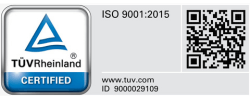Rapid-rate temperature test chambers are meant to test the durability of your product for long-term storage or operation in these environments. Temperature cycling between high and low temperatures will create accelerated thermal fatigue of solder joints, seals, and connections in your product.
These highly technical pieces of equipment are capable of simulating the types of conditions a product may face while in use. The conditions in the chamber are controlled by a series of computer monitors that can rapidly change the conditions or slow them down to last for long periods of time.
The chamber generates a cool and humid environment for produce with lower energy consumption and half the cost of refrigerated cold rooms. Designed specifically for use in hot and dry climates, the forced-air evaporative cooling chamber can be constructed for on-grid as well as off-grid settings.
An environmental test chamber artificially replicates conditions to which machinery, materials, devices or components might be exposed. It is also used to accelerate the effects of exposure to the environment, sometimes at conditions not expected.
Chamber testing involves testing and exposing products to various environmental conditions in a controlled setting. Climatic Chamber testing and Thermal Shock testing are part of chamber testing. Climatic Chamber testing is a broad category of ways to simulate climate or excessive ambient conditions exposure for a product or a material under laboratory-controlled yet accelerated conditions. On the other hand, Thermal Shock testing is used to simulate how materials will react when exposed to changes in extreme climatic conditions, such as going from extremely cold to extremely hot conditions in a very short period (usually only a few seconds).

Manufactured samples, specimens, or components are placed inside the chamber and subjected to one or more of these environmental parameters to determine reliability or measure after-effects such as corrosion. In the case of machinery such as internal combustion engines, byproducts such as emissions are monitored.
As test requirements may be relatively simple or complex, environmental test chambers vary widely in size, ranging from small units designed for placement on bench tops to large walk-in chambers. Test chambers generally have viewports or video feeds to allow for visual inspection of the sample during the test. Reach-in chambers provide an opening that technicians may use to handle test samples. Chambers providing interior visual lighting must take into account the heat generated and compensate accordingly.
As with the wide variance in size, many user control options are available, ranging from simple analogy indicators to more modern digital readouts with LCDs. Chambers may be computer programmable, and networked or Web-enabled test chambers with built-in web servers are also available.
Features & Benefits:
- Customized to meet specific test standards as required by the client.
- Temperature Range -70°C to +180°C
- Temperature Raise / Fall Range 5°C to 10°C.
- Humidity Range 10% to 97%.
- Available in cabinet type as well as walk-in type as per required by the client.
- Efficient testing of temperature and climatic conditions.
- Precise temperature accuracy and reliability.
- Easy programming, operation and UN disturbing lock mode.
- PLC-based HMI operation with Trend graph display and GSM Mode.
- Low noise operation.
- Robots type construction for long working life.
- Long life, trouble-free, advanced type water-cooled refrigeration system and long duration durable semi-sealed compressors.
- Non-CFC type refrigerants in a refrigeration system.
- Advanced design for Automatic pressure corrective system for refrigeration system.


